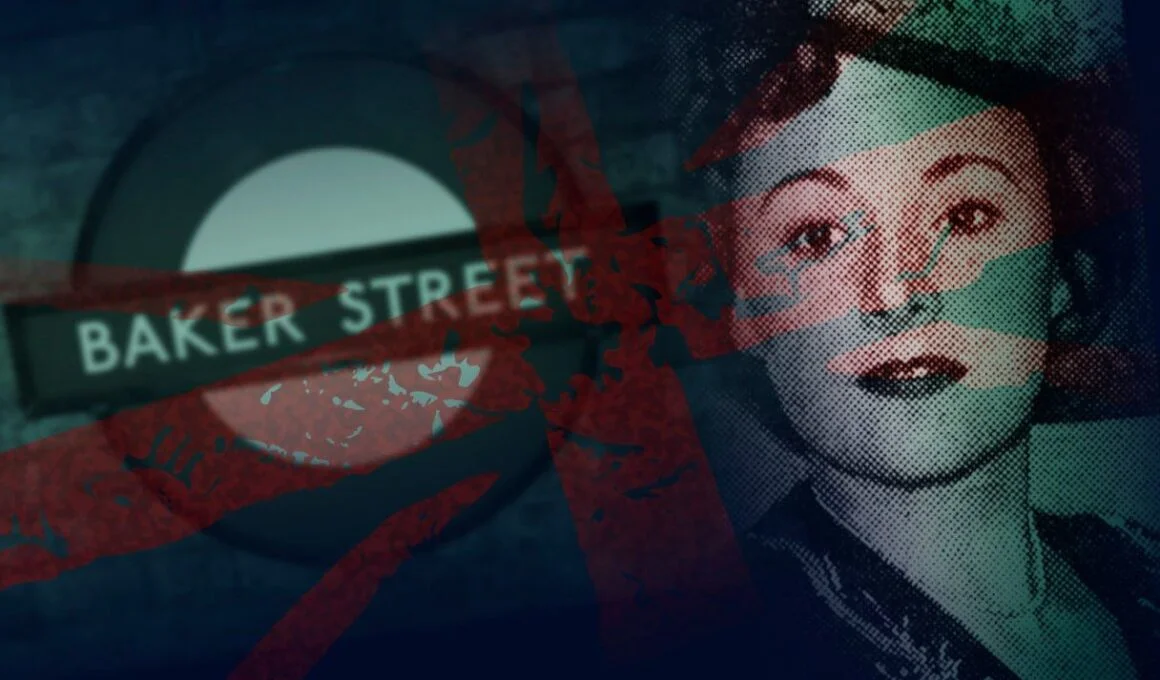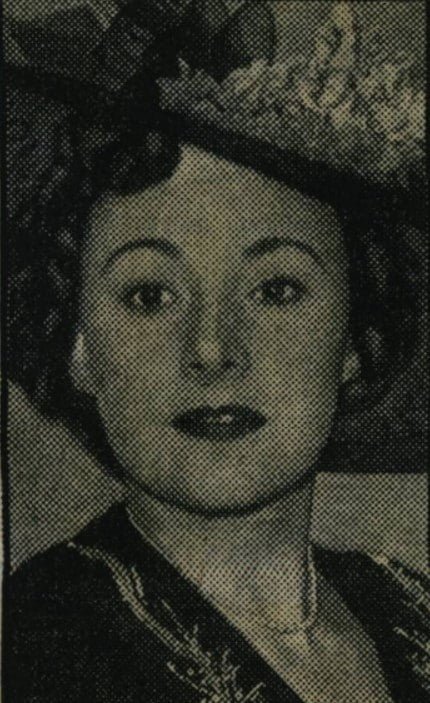by Johnny Vedmore, Unlimited Hangout:
 How a slew of dead and missing women preceded the take over of elite London night clubs by intelligence-linked gangsters.
How a slew of dead and missing women preceded the take over of elite London night clubs by intelligence-linked gangsters.
TRUTH LIVES on at https://sgtreport.tv/
In the previous instalment of this series, we examined the tragic death of Esmeralda Gullan, the founder of Esmeralda’s Barn, a night club located in an affluent part of London’s West End. However, Esmeralda was not the only female night club owner or hostess to be found dead or dying during this period. In fact, as we are about to discover, she was just one of a collection of inter-connected women who were involved in night club management and whose deaths were ruled as accidental or as suicides around the same time.
A Death on Baker Street
Barbara Knox-Marsh (sometimes written as Knox-Marshe) was born Winifred Barbara Littler on the 4 February 1928; but by the 1950s. she had started using her stage name for everything. Her mother, Margaret W. Jackson, never got the pleasure of seeing her daughter grow up as she died just a year after her birth, in 1929. Barbara had been described as an “angel” in a Daily Mirror article in 1951. On that occasion, at the tender age of 23 years-old, Knox-Marsh had reportedly backed a play called “My Wife’s Lodger” which was due to run at London’s Comedy Theatre. She paid £1000 to become a backer of the play which was deemed by all the critics as a farce and a sure loser, but soon Barbara’s picture appeared in the newspaper with the subtitle: “Barbara Knox-Marshe – girl who backed a winner.” Indeed, the stage show may have been a veritable flop when in the theatre, with one of the backers forced to sell his car to raise the funds to keep the project afloat, but the gamble eventually paid off for all the investors, as Alan Fairclough reported in his Daily Mirror piece: “This week came the little bit of heaven. The film rights of the play that everybody scoffed at have been sold.”
Barbara Knox Marsh was living the “gay life” according to an article from 17 May 1956, published in the Daily Herald. “Dancing in Mayfair… music at midnight… drinks at dawn. The day was not long enough for Barbara Knox Marsh,” read the reports. The establishment in Mayfair’s Berkeley Street, where Barbara spent the majority of her time, had originally opened in November 1954 under the name “The Stratton Club.” By May 1955, the club had begun to get a bad reputation after it was found to be “selling intoxicating liquor during other than permitted hours, and for selling without a licence” as the Westminster & Pimlico News reported on 27 May 1955. The owners were given a summons to “show cause why the club should not be struck off” with the case being adjourned for six months. By December 1955, the owners had failed to show cause and the club was officially struck-off and removed from the official register of businesses.
Yet, the club didn’t actually close and, the following April, Chief Inspector Edmund King went to the premises, supposedly to return property, only to find it openly doing business and being run as the “Blue Angel Club”. He described people dancing and drinking at the bar when he arrived and soon the club’s manager, Cyril Phillips, along with two other men were hauled in front of a judge and fined £10 for their offences. Even though there was no mention of Barbara Knox-Marsh in relation to the Blue Angel in the April 1956 Sevenoaks Chronicle and Kentish Advertiser article, which reported the court case, she was named as the owner of the establishment in multiple reports the following month. Unfortunately for Barbara Knox-Marsh, those articles reported the news of her death.

Like Esme Gullan, Barbara Knox-Marsh was found dying in her flat on Baker Street, only to be pronounced dead later at St Mary’s Hospital in Paddington. At first, her death was attributed to an overdose of sleeping pills, but this initial theory quickly changed, and soon became a very peculiar story of bizarre and unlikely happenstance. A Daily Mirror piece published on Monday 14 May 1956 reported that the police had discovered Miss Knox-Marsh’s unconscious body on the Saturday before the article went to print. They had been summoned to her residence by what the article calls “a man friend” of Knox-Marsh. She was found sitting in a chair dressed in a black evening gown and nearby was a bottle which contained sleeping tablets which the detectives quickly bagged-up as evidence.
The suspicious and untimely death of Barbara seemed like an open and shut case to the investigators in charge. This was mainly due to rumours of her apparent previous suicide attempt, even though her aforementioned aunt, Mrs. Noreen Lewis, who was by then living in Muswell Hill, told the coroner at her inquest that: “I do not think she would ever attempt to take her own life. She loved life too much.” Although she had made that statement, Mrs Lewis went on to tell the coroner that: “She was a girl inclined to dramatise. I am sure she did it thinking someone would come at the last minute to save her.” The coroner, Mr. W. Bentley Purchase, stated clearly: “There is no evidence before me to justify a verdict of suicide.” He eventually recorded a verdict of accidental death, but the actual circumstances surrounding Knox-Marsh’s death were frankly ridiculous.
Just before Knox-Marsh died, the Blue Angel had reportedly been under negotiations for a change in ownership. She had been staying with an accountant named James McBurnie during the weeks leading up to her tragic death. She had been lodging at his flat, even though Barbara also had her own flat in Southwold Mansions in Maida Vale. McBurnie told the St. Pancras coroner that he had gone to bed at around 11pm on the night of her death and woke up around 5am to discover her on the sitting-room floor with a “standard lamp lying near by”, to quote a Leicester Evening Mail article from 16 May 1956. This latter description of how her body was found also contradicts the initial reports of how her body had been discovered seated in a chair. Dr. F. E. Camps, a pathologist giving evidence to the coroner, stated that he had found about “10 grains of Seconal” in her body which he recorded as being a high dose, “but not necessarily a lethal one on ordinary circumstances.”
A Marylebone Mercury article on 18 May 1956 also noted: “She [Barbara Knox-Marsh] had been friendly with Esme Noel-Smith [i.e. Esme Gullan], Knightsbridge club owner found gassed last year, and also Linda Justice, club hostess who died from too many sleeping tablets on May 5.” A week after the latter Marylebone Mercury article, the same publication produced a fuller account of how Barbara Knox-Marsh had eventually met her tragic end.
On Friday 25 May 1956, the paper reported that: “Pathologist Dr. F. E. Camps said she had had bruises in keeping with striking something. She had marks on her wrist and neck where she had become entangled with the cord of the fallen lamp standard. These had given her respiratory embarrassment which might have contributed to her death; the main cause of which had been an overdose of Seconal. She had taken 10 grains which was a high dose, but not necessarily a lethal one.”
The coroner asked Mr. Camps: “It is not a large dose?” to which the pathologist stated: “No.” He also stated that there was nothing to suggest violence at all, seemingly ignoring his own evidence of “bruises in keeping with striking something,” and “marks on her wrists and neck.” Instead, Camps posited that Knox-Marsh had come back to the flat, taken sleeping tablets, fallen down, where the cord for the standard lamp had become wrapped around her neck. He admitted that the lamp cord had by no means asphyxiated her, and he also gave evidence stating that the overdose hadn’t been enough to kill her. Despite that, he concluded that the combination of the two had led to Knox-Marsh’s supposedly accidental death. The coroner stated his conclusion: “She might have slipped from the chair and got into an awkward position. There is no evidence to suggest suicide. Life up to now had been one of excitement and pleasure rather than depression leading to suicide.”
Read More @ UnlimitedHangout.com



